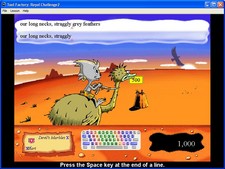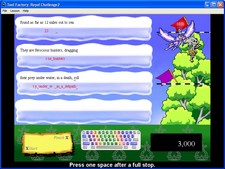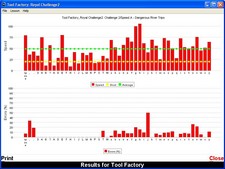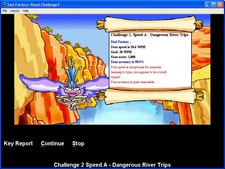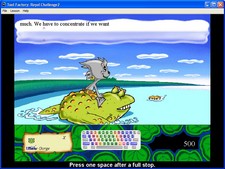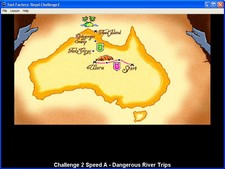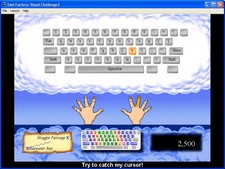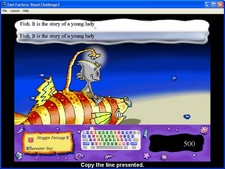The Status of Elementary Keyboarding - A Longitudinal Study
(Harriet Rogers, Jody Laehn, Anne Lang, Deb O�Leary and Mary Sommers)
A research study conducted in May 2003 to determine if the number of school districts that offered keyboarding instruction at the elementary level has increased since more elementary children use the computer as a writing tool. The purpose of the study was to determine the status of elementary keyboarding in the State of Wisconsin.
Extracts:
Research done as early as 1932 found that elementary children who typed their work achieved greater gains in all subjects than those who did not type their work (Hoot, 1986)
Keyboarding was also found to be highly motivating and led to more positive attitudes toward spelling (Anderson-Inman, 1990)
Keyboarding is now as important as penmanship, yet many students learn the keyboard without guidance, waste limited compute time, and develop habits that may be difficult to change.
Many studies have documented the value of children learning touch keyboarding (McKay, 1998; Owston, 1997; Bartholome, 1996; Nieman, 1996; Hoot, 1986) Rogers (2003) lists the following benefits for children who are introduced to the touch method of keyboarding:
� Improvement in language arts � reading, spelling, and writing ability.
� Improvement in efficiency in using the computer as a writing, editing and computing tool, thereby maximizing classroom time.
Improvement in attitude toward writing � less frustration in looking for keys rather than entering information.
� Improvement in proper keyboarding techniques and use of the computer, thereby eliminating the formation of bad keyboarding habits for later word processing and computer allocation.
� Improvement in motivating all students toward doing homework.
� Improvement in creative thought.
� Improvement in integrating keyboarding with all subject areas.
� Improvement in preparing all students for a technological society.
The general consensus is that age 8 or 9 in grade 3 or 4 are the ideal ages to be taught keyboarding skills because children at this age possess the necessary fine motor skills, eye-hand co-ordination, and reading ability to succeed in keyboarding. (Erthal, 1998)
Numerous studies indicate that keyboard learning should be taught prior to using the computer, especially since students need formal instruction to acquire keyboarding skills using the touch system (PCBEE, 1997; Nieman, 1996; Prigge and Braathen, 1993)
Some of the findings of the study were:
1. Keyboarding software was preferred over textbooks.
2. Elementary classroom teachers are the primary instructors in teaching keyboarding skills.
3. Reinforcement of keyboarding instruction was considered important as one the touch method was introduced that the skills be reinforced at every grade level following the introduction.
4. Keyboarding/word processing was integrated most with language, arts and social skills.
5. Children with usable keyboarding skills concentrate won they are typing and not where the keys are.
6. Studies indicate a dramatic increase in language skills as a result of children inputting words and sentences frequently using a computer. Keyboarding and language arts are a dynamic duo. Keyboarding should be integrated with language arts and other subject areas, such as social studies and science.
The Spacing Effect
One of the primary psychological principles of learning is that distributed practice is better than massed practice. That is, practice for several short periods of time is better than practice over a single but equal long period of time. An example of this principal is learning to play the piano. Practicing the piano for a half-hour each day for six days is better than practicing for a three-hour block one time in six days. In other words the practice is distributed or spaced. ((Bartholome and LaBonty, 1994)
Research shows that children with keying skills are able to compose faster, are prouder of their work, produce documents with a neater appearance, have better motivation, and demonstrate improved language skills (Nieman, 1996).
Keyboarding skill directly influences productivity in reading language, arts and writing.
96% of jobs require effective keyboarding skills. (Nadine Bunnell, Keyboarding Specialist, Utah State Office of Education)
People who used to find �hunt and peck� keyboarding sufficient realize that it doesn�t make much sense to have a computer with lightning speed if the information inputted into the machine trickles in like molasses in January. (Sandberg-Diment, 1984)
It is recommended that keyboarding first be taught as a concentrated unit in the third grade and reviewed in each succeeding grade to allow students to achieve a high degree of proficiency.
Keyboarding is a cumulative skill � what can be effectively learned at one level depends heavily upon what has been learned earlier. If hunt and peck habits become ingrained, it becomes much more difficult to develop a competent skill. You need that basic foundation early on. (Desert News, April 5, 1999)
While most kids and adults can learnt to hunt and peck on their won, real typing speed depends on Proper Technique (Michael J Himowitz, Baltimore Sun)
�Typequick has been developed in conjunction with experienced educators to produce an award winning keyboard training package. I recommend Typequick to students and organizations who seriously want to acquire keyboard skills.�
Professor Mitsuo Takahashi
Reitaku University, Japan
What are keyboard skills?
An automatic skill or sub-conscious skill
All ten fingers are used
Fast and accurate entry of characters onto the computer screen
Without looking down at the keyboard
Without searching for keys
Why are keyboard skills so important?
Requirement in today�s digital age
90% of business documents are electronic
Lack of formal keyboard training
Increased confidence in software use
Ideas can be recorded at 3-5 times the rate of handwriting
Reduces time spent at PCs
Increased job prospects
